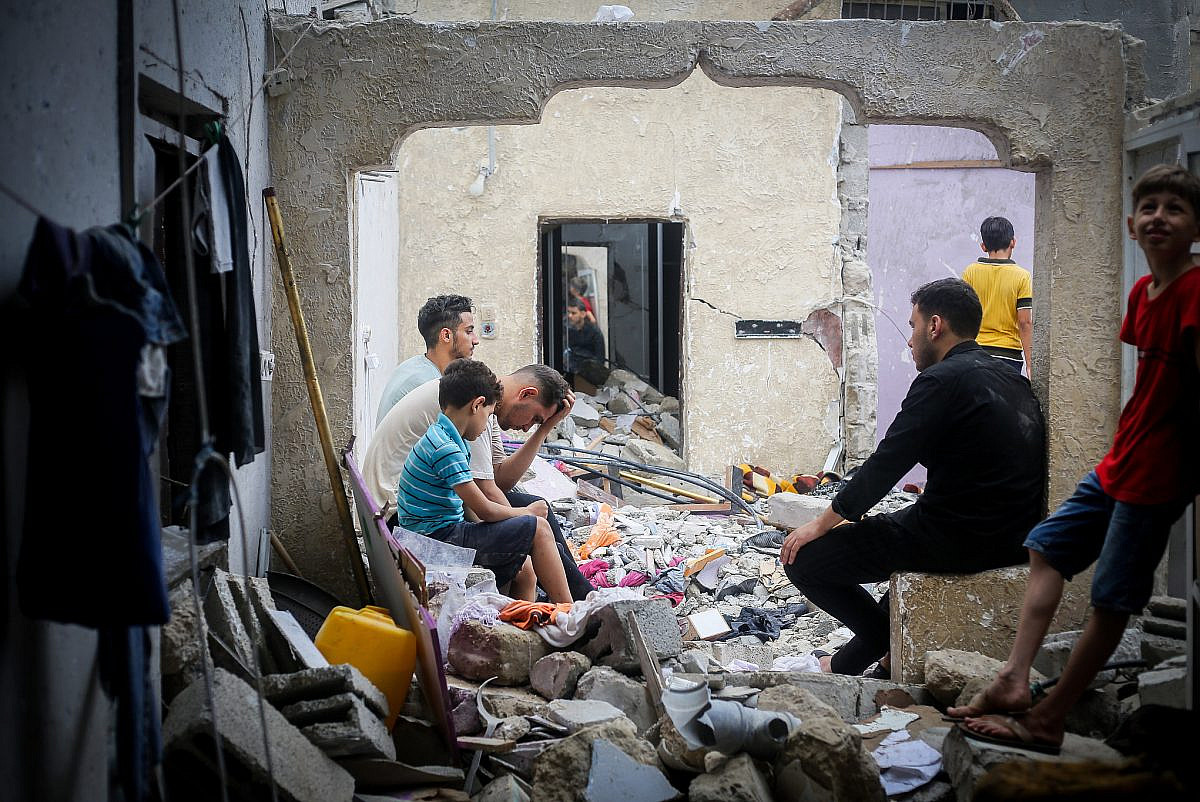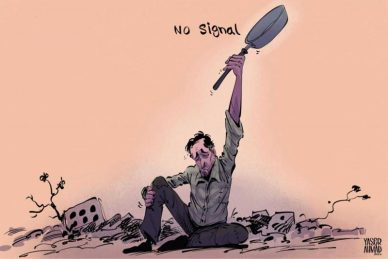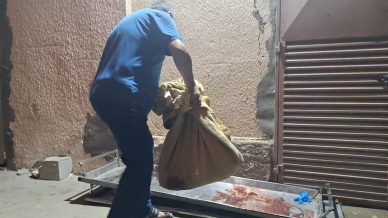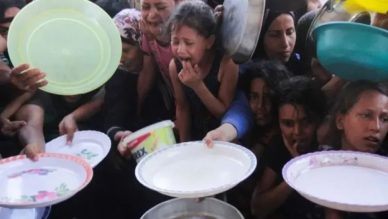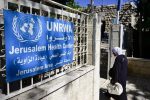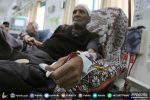KHAN YUNIS, (PIC)
The personal stories of citizens in Khan Yunis refugee camp in the southern Gaza Strip reveal the magnitude of the suffering they face daily in a place that has long been a source of dreams for its inhabitants. Yet, nightmares of escaping the specter of war now dominate the lives of camp residents during the long nights.
Wafa Al-Masri, 58 years old, lives with her family in a temporary shelter made of tin in the camp located west of the city. The Palestinian refugee is drying leftover bread in preparation for harsher days that might lie ahead, hoping to sell it to support her family if famine grips the besieged Gaza Strip.
Wafa describes life as extremely difficult, trying to keep her children alive “as much as we can. If I don’t prepare for the worst, those who survived the war may not survive the hunger.”
Her daughter Rasha, 20, describes the situation, “There is no clean water to drink, which leads to the spread of diseases. All the children have rashes on their faces and bodies; there is not a single child unaffected. Everyone is packed together, making things worse.”
Khan Yunis refugee camp was established after the Nakba of 1948, providing shelter for Palestinian refugees, most of whom are from the cities of Beersheba and Jaffa, and the village of Al-Majdal, now known as Ashkelon. The families living in the camp share strong bonds forged through the common experience of displacement in 1948. They bear the same suffering and pain, united by familial ties.
When it was founded, the area of Khan Yunis camp was 548 dunums. In 1953, its population was around 12,100 refugees. By 2023, the number of registered refugees reached 90,000 according to UNRWA.
Camp residents have worked in fishing, agriculture, and other trades to make a living. Khan Yunis camp includes 16 UNRWA school buildings and hosts 19 schools. The neighborhoods in the camp are divided in a way that allows family members to live together, preserving tribal unity.
Since the onset of the genocide against Gaza in October 2023, the camp has suffered massive destruction, with 75% of homes destroyed. Many neighborhoods have turned into rubble, and residents carefully navigate the debris to set up tents or repair others, as the occupation forces’ attacks targeted the entire infrastructure, including 12 schools, two health centers, and over 10 public facilities.
Homes that represented a part of the lives of thousands of Palestinians have been flattened, and streets that once witnessed daily activity are now completely empty except for rubble. Even public facilities and health and educational services in the camp have been destroyed, exacerbating the suffering of residents already facing dire conditions.
The systematic destruction of the camp occurred at a time when Palestinians in Khan Yunis had begun to feel a glimmer of hope in rebuilding their lives after years of conflict. With the outbreak of war, thousands of Palestinians were forced to flee their homes in the northern and central areas of the Gaza Strip, heading south in search of safety. Khan Yunis camp welcomed large numbers of these displaced individuals, leading to severe overcrowding and a deterioration of basic services.
According to Médecins Sans Frontières, displaced residents in the camp face a severe shortage of clean water, sanitation, and healthcare, increasing the spread of skin diseases and epidemics.
Mona, an 11-year-old girl from Beit Lahiya, had to flee with her family to Khan Yunis after the escalation of bombing in their area. She says, “Before October, we lived our lives normally, going to school and returning to find my mother preparing food for us. Now, we live in a tent with dozens of other families, and we miss everything.”
In another story, a camp resident recounts his experience of repeated displacement since 2000, when he was eight years old. He says, “The (Israeli) army’s bulldozers entered Khan Yunis camp and destroyed my uncle’s house and my grandfather’s house. Then, for some reason, they stopped at our house.” He adds, “This ongoing displacement has greatly affected families’ stability and their ability to build a stable life.”
According to human rights reports, residents suffer from a severe shortage of food and water, in addition to a lack of electricity since the war began. According to a UN report, about 80% of the population suffers from food insecurity, while only 20% can meet their daily needs, with suffering particularly intensifying under harsh climatic conditions.
Um Mohammed, a resident of Khan Yunis camp, says, “We didn’t know when the next attack would come. Every time we start to build something new, the occupation destroys it. But we are steadfast here; we will remain despite everything. We have no other choice.”
Many testimonies we have heard from residents of Khan Yunis camp confirm that the destruction is merely part of the occupation’s strategy to break the will of the Palestinian people, yet they simultaneously demonstrate an indomitable resolve.
On the other side of suffering, there is another face striving to emerge amid the unrelenting horrors of war, where young people are trying through volunteer work to extract hope from the rubble and instill it in the souls of residents, even if it is through a bowl of hot soup to nourish a hungry child, or providing relief to a family forcibly displaced from their loved ones and social embrace.
Living conditions in the camp are worsening as the war continues, and residents face difficulties in obtaining a loaf of bread after most bakeries have closed their doors in the face of the starvation campaign imposed by the occupation forces, blocking crossings and preventing humanitarian aid from entering, which further exacerbates the suffering of residents, especially children and the elderly.

